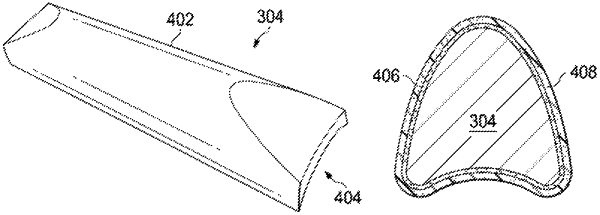| CPC B64C 27/473 (2013.01) [B64F 5/10 (2017.01); F01D 5/147 (2013.01); B29C 70/48 (2013.01); B29K 2705/08 (2013.01); B29L 2031/082 (2013.01); B64C 2027/4733 (2013.01); F05D 2230/50 (2013.01); F05D 2300/2263 (2013.01); F05D 2300/44 (2013.01)] | 16 Claims |

|
1. A blade for a rotary wing aircraft, comprising:
an outer layer defining a cavity; and
at least one inertia insert disposed within the defined cavity,
wherein the at least one inertia insert includes a plurality of weight segments, and a binding agent surrounding one or more of the plurality of weight segments and separating the one or more of the plurality of weight segments from a neighboring weight segment;
wherein the one or more of the plurality of weight segments include tungsten; and
wherein a trailing surface of at least one of the plurality of weight segments is crescent shaped and the location of the center of gravity of the blade is based on the trailing surface, and
wherein the one or more of the plurality of weight segments are configured to flex without fracture in response to a bending moment on the blade.
|